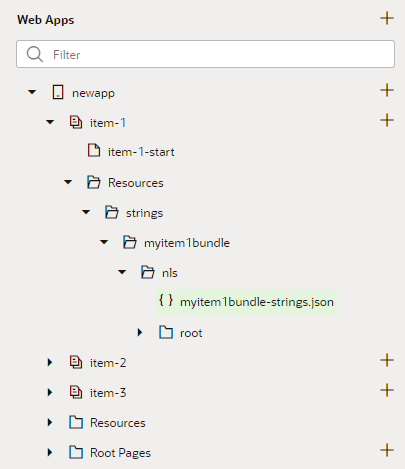Create Translation Bundles
You can use the Translation tab in the Settings editor to create additional translation bundles for application artifacts, flows and pages.
By default, each web app contains a translation bundle app in the app’s top-level resources folder. You can create additional translation bundles for the app in the app artifact’s Settings editor. You can also create bundles for individual flows and pages in the Settings editor for the flow or page when you want the translations to be flow-scoped or page-scoped.
When you create a new bundle in the Translations tab of the Settings editor, the metadata for the new bundle is automatically added to the JSON file of the app, flow, or page. For example, if you create a translation bundle for a page in the page’s Settings editor, a resources folder containing the new bundle is created at the page level and the page’s JSON file is updated with the metadata for the bundle.

Description of the illustration translations-bundle-page.png
When you externalize a text for translation, the string and key are added to the nearest available bundle by default. For example, if you create a translation bundle for a page, the strings and keys are added to the page’s bundle when you externalize strings in the page. Strings in other pages are not added to that bundle when they are externalized.
To create a translation bundle:
strings folder in the resources folder of the artifact. The strings and resources folders are created if they do not exist for the artifact. The path to the new bundle is displayed in the Translations tab. The path is relative to the artifact’s JSON file.
